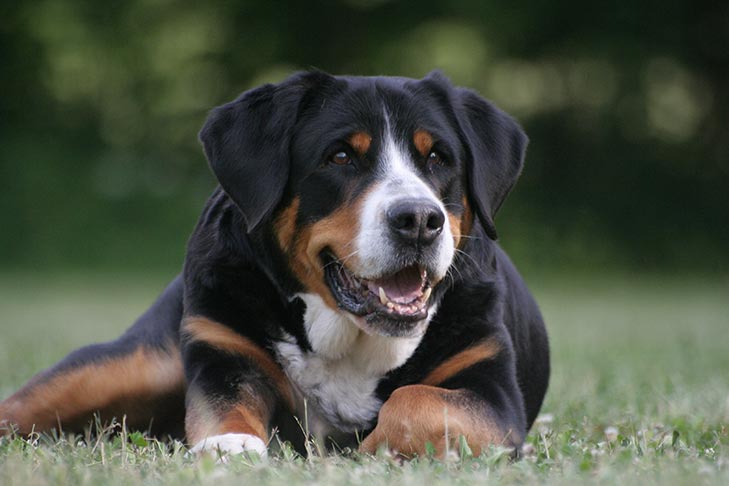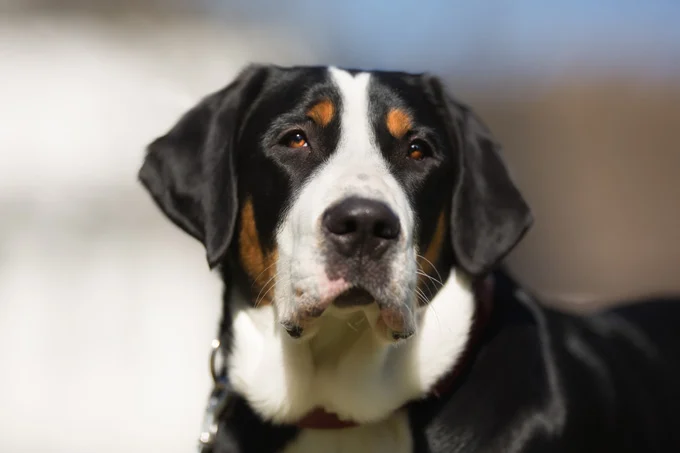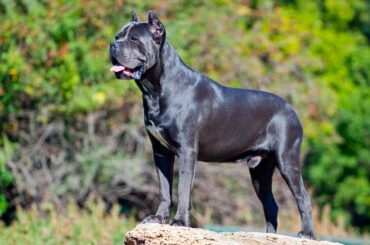The Greater Swiss Mountain Canine is a dog breed that originated in Switzerland’s Alps. The Appenzeller, Entlebucher, and Bernese are the other three kinds of Sennenhunde, or Swiss Mountain Dogs. The Greater Swiss Mountain Dog is the oldest and largest of the four types of Sennenhunde, or Swiss Mountain Dogs.
The word Sennenhund refers to dairymen and herders in the Swiss Alps who go by the name Senn or Senner. Greater Swiss Mountain Dogs are very certainly the result of indigenous canines mating with giant mastiff-type dogs introduced by foreign settlers to Switzerland.
The Greater Swiss Mountain Dog’s origin is unknown. For three centuries, beginning in 1515, the distant valleys of Switzerland were more or less cut off from the rest of the world. Inbreeding was used to develop certain dog breeds, and puppies were handed to neighbors and family members.

There are various hypotheses about how the four Sennenhund breeds came to be. The most prevalent explanation claims that the dogs are descendants of the Molossus, a big mastiff-type dog that accompanied the Roman Legions on their over 2,000-year-old conquest of the Alps. The breed was developed as a draught dog to draw large carts, as a guard dog to guard and move dairy cattle, and as a family friend and watchdog.
Professor Heim noticed a magnificent short-haired dog entering a Bernese Mountain Dog competition in 1908. This year can be considered the birth year of the Greater Swiss. Because of its resemblance to the sturdy Swiss butcher’s dogs he had also seen, he classified the dog as a separate breed and named it the Greater Swiss.
The popularity of the breed rose slowly, and it was further hampered by two world wars. The Greater Swiss arrived in America in 1968, with the first litter born in 1970. The breed was accepted into the AKC Miscellaneous class in 1985, and full recognition was granted in 1995.
Table of Contents
Greater Swiss Mountain Dog Body description
The Greater Swiss Mountain Dog is a draft dog with a lot of muscle. This breed is significantly longer than tall and is large and powerful. Their eyes are almond-shaped, hazel to chestnut in hue (dark brown is recommended), medium in size, and neither deep set nor projecting. The skull is large and flat, with a little halt in the middle.

It has a big, blunt, and straight muzzle. At the shoulder, males range from 25.5 to 28.5 inches (65 to 72 cm) and females from 23.5 to 27 inches (60 to 69 cm). The Greater Swiss Mountain Dog has no normal weight; males weigh 90 to 140 lb and females weigh 80 to 110 lb.
The outer layer of the double coat is dense and measures about 1.25 to 2 inches long. The topcoat can have a variety of textures, ranging from short, straight, and fine to longer, wavier, and coarser. The undercoat is thick and varies in color from dark gray to light gray to tawny. It must be on the neck, but with such a thick coat, it can be anywhere on the body.
Greater Swiss Mountain Dog Behavior
- The Greater Swiss Mountain Dog is a devoted family companion who is sensitive, loyal, and intelligent.
- This breed is calm and easygoing, and it is nice with children and other pets.
- The dog, on the other hand, is territorial, alert, bold, and watchful. Happy and outgoing, with a deep liking for people and children.
- This breed is outgoing, energetic, peaceful, and dignified.
- While the breed does require exercise, it does not necessitate a large space. The breed prefers to stay near its owners, rarely wandering too far without checking in. They will not be content living in a kennel; they want to spend time with their family. They want to be noticed and touched.
- Greater Swiss Mountain Dogs are eager to please and are courageous, loyal, and enthusiastic workers.
The Greater Swiss Mountain Dog is a good watchdog because it is alert and vigilant. They have a proclivity for noticing everything in their environment and are ready to raise an alarm. When confronted with a threat, they will stay firm and put on a show to scare individuals who are unfamiliar with the dog. A non-threatening stranger is tolerated by Greater Swiss Mountain Dogs.
They are confident and at ease in unexpected environments, and they remain calm in the presence of strange noises and strangers. They are not aggressive toward other dogs or species, and they do not bite.
Training of the Greater Swiss Mountain Dog
Because they grow to be so enormous when fully grown, it’s critical to begin obedience training and socialization early in order to teach the dog to be friendly with other dogs and people. And be prepared for a long puppyhood: the dog is slow to mature, both physically and intellectually, and can remain puppyish until the age of three.
Obedience training can provide them with the mental stimulation they require and is necessary when dealing with a dog of this size. When they’re young, kids need early socialization and exposure to a variety of people, sights, noises, and experiences. Socialization is important in ensuring that your puppy develops into a well-rounded dog.

Caring for the Greater Swiss Mountain Dog
Greater Swiss Mountain Dogs breed enjoys the outdoors, especially in cold weather, as befits a dog with working ancestors. The dog requires regular exercise, such as a long walk or vigorous play, and enjoys pulling in particular. Because this is a huge, working dog, they want plenty of space to run around in, therefore a house with a large, securely fenced yard is ideal. They only require a moderate level of activity, however.
This breed is a perfect choice for cold areas because of its Swiss origin, and they like romping in the snow. On the other hand, they are prone to heatstroke. When it’s hot outside, don’t let them exercise vigorously; instead, make sure they have enough shade and, of course, lots of drink. The short coat is easy to care for, and the breed is naturally tidy, so grooming a Swiss isn’t difficult. Brushing once or twice a week, with a bath once or twice a month, or as needed.
Greater Swiss Mountain Dog – Health
Greater Swiss Mountain Dogs are a generally healthy breed for their size; they have considerably fewer health issues than more populous breeds in the same size range. Some of the diseases that dogs are prone to include idiopathic epilepsy, gastric dilatation-volvulus (GDV), often known as bloat, urinary incontinence, and canine hip dysplasia (CHD). The average life expectancy is 10 to 12 years.
RECOMMENDED ARTICLES
- Great Pyrenees Dog- Characteristics, Behaviour And Health
- 7 Body Characteristics of German Shepherd Chow Mix – Behaviour, Caring & Health
- The White Miniature Schnauzer: Your Perfect Pint-sized Companion
- Pronouncing Cane Corso 101: Your Ultimate Guide to Flawless Articulation
- Great Dane Dog – Characteristics, 4 Full Behaviour, Caring And Health
- Cane Corso Price Demystified: How Much Should You Expect to Pay?
- Doberman Pinscher Dog ; 3 Superb Physical Characteristics And Behaviour
If you like, please share it. Sharing is usually caring




